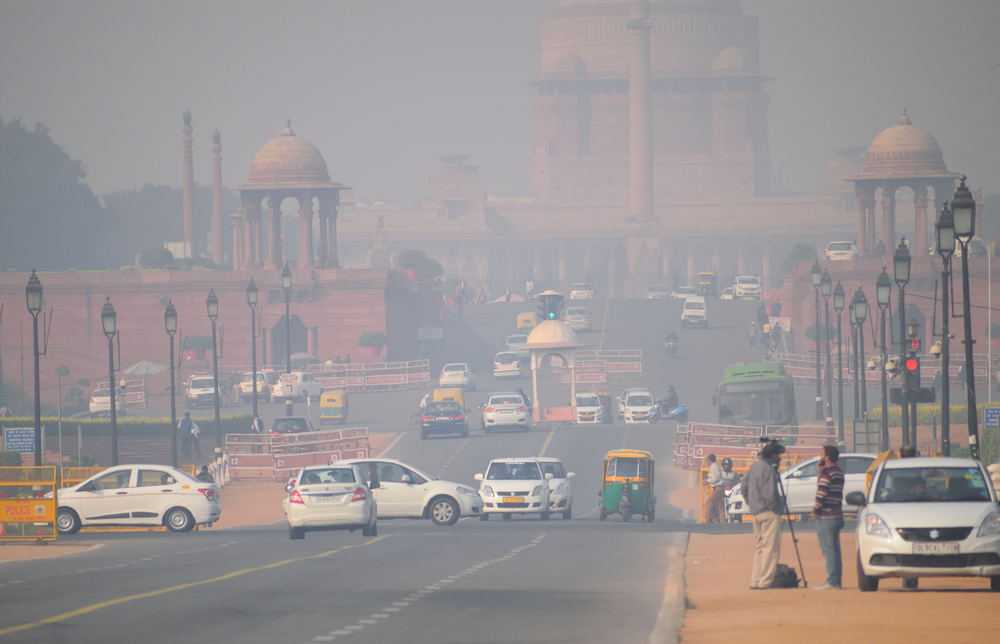Environment: Environmental Issues
India is facing a range of environmental issues, including air and water pollution, deforestation, and loss of biodiversity.
- Air pollution: India has some of the highest levels of air pollution in the world, caused primarily by vehicle emissions, industrial activities, and burning of fossil fuels.
- Water pollution: Industries and agriculture are the primary sources of water pollution in India, with pollutants such as chemicals and fertilizers contaminating rivers and other water sources.
- Deforestation: India has lost a significant portion of its forest cover due to logging and conversion of forest land for agriculture and urban development, leading to loss of biodiversity.
- Loss of biodiversity: India is facing a loss of biodiversity due to habitat destruction and over-exploitation of natural resources.
- Soil erosion and desertification: The loss of vegetation cover, overgrazing, and other human activities have led to soil erosion and desertification in many parts of India.
- Climate change: India is one of the most vulnerable countries to the impacts of climate change, such as sea level rise, heat waves, and changes in precipitation patterns.
- Waste management: India has a growing problem of waste management, with a lack of proper disposal facilities and a lack of awareness of the importance of waste segregation and recycling.
- Water scarcity: Many parts of India are facing water scarcity due to overuse and depletion of water resources, as well as inadequate infrastructure for water management.
- Over-exploitation of natural resources: India's rapid economic growth has led to over-exploitation of natural resources, such as minerals and fossil fuels, which can have detrimental effects on the environment.
- Pollution of sacred rivers: India's sacred rivers, Ganges, and Yamuna are highly polluted due to the untreated sewage, industrial effluent and religious practices.
Air Pollution
Air pollution is a major environmental issue in India, particularly in urban areas. The primary sources of air pollution are vehicle emissions, industrial activities, and burning of fossil fuels. The effects of air pollution on the environment in India are far-reaching and have a significant impact on the health and well-being of its citizens.
- Damage to crops and vegetation: Air pollution, particularly from industrial activities, can damage crops and vegetation, leading to reduced yields and decreased agricultural productivity. For example, a study conducted in northern India found that air pollution from industrial activities had a negative impact on the growth and productivity of wheat and rice crops.
- Impacts on human health: Air pollution can have serious health effects, including respiratory and cardiovascular diseases. In India, air pollution is a major contributor to the high rates of respiratory illness, such as asthma and bronchitis, particularly in urban areas. Additionally, air pollution has been linked to an increased risk of cancer and other chronic diseases.
- Damage to historical and cultural sites: Air pollution can cause damage to historical and cultural sites, such as temples and monuments. For example, the Taj Mahal, one of India's most iconic cultural sites, has been affected by air pollution, which has caused discoloration and damage to the marble.
- Loss of biodiversity: Air pollution can also have an impact on biodiversity, particularly in the form of acid rain, which can harm fish and other aquatic life, and damage forests and other natural habitats.
- Climate change: Air pollution also contributes to climate change, by emitting greenhouse gases such as carbon dioxide and methane.
Air pollution in India is a serious and pressing issue that requires immediate action. The Indian Government has taken steps to address this issue, such as implementing stricter emissions standards for vehicles and industry, and promoting conservation efforts for endangered species. However, more needs to be done to address this issue, such as promoting clean energy, public transportation, and encouraging sustainable practices.
Water Pollution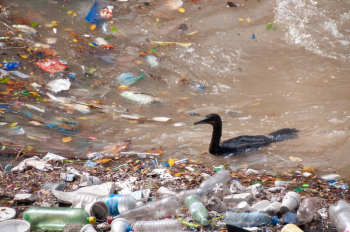
Water pollution is a significant environmental issue in India, caused by a variety of sources, including industries and agriculture. The effects of water pollution on the environment in India are far-reaching and have a significant impact on the health and well-being of its citizens.
Contamination of drinking water: Water pollution can lead to the contamination of drinking water, which can have serious health consequences for human populations. In India, many communities are at risk of waterborne diseases due to the contamination of drinking water with pollutants such as pesticides and industrial chemicals.
- Loss of aquatic life: Water pollution can have a significant impact on aquatic life, causing fish kills and harming other aquatic organisms. For example, the Ganges River, one of India's most important water sources, is heavily polluted with industrial and agricultural waste, leading to a decline in fish populations and other aquatic life.
- Damage to wetlands and other habitats: Water pollution can also damage wetlands and other habitats, which provide important ecosystem services and support a wide range of plant and animal species. For example, the wetlands of the Sundarbans, which are home to the Bengal tiger, are under threat due to water pollution from industrial and agricultural activities.
- Reduced water availability: Water pollution can also lead to a reduction in the availability of water for human consumption and irrigation, particularly in areas that are already facing water scarcity.
- Climate change: Water pollution also contributes to climate change, by releasing greenhouse gases such as methane and carbon dioxide from decomposing organic matter in water.
The Indian government has taken steps to address water pollution, such as implementing stricter regulations for industries and agriculture, and promoting conservation efforts for endangered species. However, more needs to be done to address this issue, such as improving infrastructure for waste management and promoting sustainable practices to reduce pollution. It's also important to increase public awareness about the importance of water conservation and the impacts of pollution on human health and the environment.
Deforestation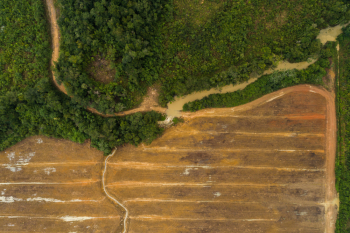
Deforestation is a major environmental issue in India, caused by a variety of factors, including logging, conversion of forest land for agriculture, and urban development. The effects of deforestation on the environment in India are far-reaching and have a significant impact on the health and well-being of its citizens.
- Loss of biodiversity: Deforestation can lead to a loss of biodiversity, as it destroys the natural habitats of plants and animals, including many species that are found only in India. For example, many species of birds and reptiles are under threat of extinction in India due to deforestation.
- Increase in natural disasters: Deforestation can lead to an increase in natural disasters, such as floods and landslides, as it reduces the ability of forests to absorb water and hold soil in place. For example, the frequency and intensity of floods have increased in many parts of India due to deforestation in the catchment areas of rivers.
- Climate change: Deforestation also contributes to climate change, by releasing carbon stored in trees, and reducing the ability of forests to absorb carbon dioxide from the atmosphere.
- Soil erosion: Deforestation also causes soil erosion, as the roots of trees help to hold soil in place, and protect it from erosion by wind and rain.
- Reduction in water availability: Deforestation can also lead to a reduction in water availability, as forests play a crucial role in maintaining the hydrological cycle, by releasing water vapor through transpiration, and protecting catchment areas of rivers and streams.
The Indian government has taken steps to address deforestation, such as implementing stricter regulations for logging and promoting conservation efforts for endangered species. However, more needs to be done to address this issue, such as promoting sustainable land use practices and increasing public awareness about the importance of forests for the environment and human well-being.
Loss of Biodiversity
Biodiversity refers to the variety of life on Earth, including the variety of species, ecosystems, and genetic diversity within species. India is known for its rich biodiversity, but it is facing a loss of biodiversity due to a variety of factors, including habitat destruction, over-exploitation of natural resources, and pollution. The effects of the loss of biodiversity on the environment in India are far-reaching and have a significant impact on the health and well-being of its citizens.
- Loss of ecosystem services: Biodiversity plays a critical role in maintaining the functioning of ecosystems, providing a variety of services such as pollination, pest control, and water purification. The loss of biodiversity can lead to a decline in these services, which can have negative impacts on human well-being and the environment.
- Decline in the populations of keystone species: The loss of biodiversity can also lead to a decline in the populations of keystone species, which play a critical role in maintaining the structure and functioning of ecosystems. For example, the Bengal tiger, which is an apex predator in the Sundarbans mangrove forest, is facing extinction in India due to habitat loss and poaching.
- Loss of cultural and spiritual values: Biodiversity also holds cultural and spiritual values for many communities in India, and its loss can have a negative impact on the cultural identity and well-being of these communities.
- Climate change: Biodiversity also plays a role in regulating the Earth's climate, and its loss can have an impact on the Earth's climate system.
The Indian government has taken steps to address the loss of biodiversity, such as implementing stricter regulations for logging and hunting, and promoting conservation efforts for endangered species. However, more needs to be done to address this issue, such as promoting sustainable land use practices and increasing public awareness about the importance of biodiversity for the environment and human well-being.
Soil Erosion and Desertification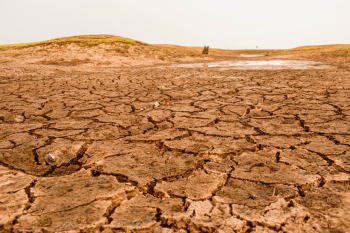
Soil erosion and desertification are environmental issues in India that are caused by a variety of factors, including deforestation, overgrazing, and other human activities. The effects of soil erosion and desertification on the environment in India are far-reaching and have a significant impact on the health and well-being of its citizens.
- Loss of agricultural productivity: Soil erosion can lead to a loss of soil fertility and a decline in agricultural productivity, making it difficult for farmers to grow crops and earn a living. For example, in the state of Rajasthan, which is prone to desertification, farmers are facing difficulties due to the loss of soil fertility caused by overgrazing and other human activities.
- Increased risk of natural disasters: Soil erosion can also increase the risk of natural disasters, such as landslides and flash floods, as it reduces the ability of the soil to absorb water and hold slopes in place.
- Loss of biodiversity: Soil erosion and desertification can also lead to a loss of biodiversity, as it destroys the natural habitats of plants and animals. For example, many species of birds and reptiles are under threat of extinction in India due to desertification.
- Reduced water availability: Soil erosion and desertification can also lead to a reduction in water availability, as it can cause changes in the water cycle, leading to a decline in the recharge of aquifers and surface water sources.
- Climate change: Soil erosion and desertification also contributes to climate change, by releasing carbon stored in the soil, and reducing the ability of the soil to absorb carbon dioxide from the atmosphere.
The Indian government has taken steps to address soil erosion and desertification, such as implementing stricter regulations for land use, and promoting conservation efforts for endangered species. However, more needs to be done to address this issue, such as promoting sustainable land use practices and increasing public awareness about the importance of soil and the impacts of erosion and desertification on human health and the environment.
Climate Change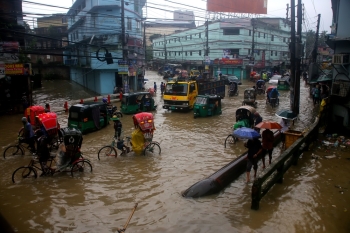
Climate change refers to the long-term changes in the Earth's climate, caused by the increase of greenhouse gases in the atmosphere, primarily carbon dioxide, as a result of human activities. India is one of the most vulnerable countries to the impacts of climate change, and it's facing a range of environmental effects that have a significant impact on the health and well-being of its citizens.
- Increased frequency and intensity of extreme weather events: Climate change can lead to an increase in the frequency and intensity of extreme weather events such as heat waves, droughts, and floods, which can have devastating impacts on human populations and the environment. For example, in recent years, India has experienced an increase in the frequency and intensity of heat waves, which have led to loss of lives and crop damage.
- Sea level rise: Climate change can also lead to sea level rise, which can have severe impacts on coastal communities and infrastructure. For example, many of India's low-lying coastal areas, such as the Sundarbans, are at risk of flooding and erosion due to sea level rise.
- Loss of biodiversity: Climate change can also lead to a loss of biodiversity, as it can cause changes in the distribution and abundance of species, and can alter the timing of seasonal events such as migration and reproduction.
- Reduced water availability: Climate change can also lead to changes in precipitation patterns, leading to reduced water availability in many parts of India, particularly during the dry seasons.
- Damage to infrastructure: Climate change can also lead to damage to infrastructure, such as roads, bridges and buildings due to extreme weather events.
The Indian government has taken steps to address the impacts of climate change, such as promoting clean energy and energy efficiency, and implementing policies to reduce emissions of greenhouse gases. However, more needs to be done to address this issue, such as investing in climate change adaptation measures and increasing public awareness about the impacts of climate change on human health and the environment.
Waste Management
Waste management refers to the collection, transportation, processing, and disposal of waste materials. India is facing a growing problem of waste management, as the country generates large amounts of waste, and lacks proper disposal facilities and awareness of the importance of waste segregation and recycling. The effects of poor waste management on the environment in India are far-reaching and have a significant impact on the health and well-being of its citizens.
- Air and water pollution: Poor waste management can lead to air and water pollution, as waste materials can release pollutants into the air and water, which can have negative impacts on human health and the environment. For example, open dumping of waste materials can lead to the release of methane, a potent greenhouse gas, and can contaminate water sources with harmful chemicals and pathogens.
- Loss of biodiversity: Poor waste management can also lead to a loss of biodiversity, as it can cause damage to natural habitats, and harm plants and animals that live in these areas. For example, the accumulation of plastic waste in oceans and other water bodies can harm aquatic life, including fish and sea turtles.
- Climate change: Poor waste management also contributes to climate change, by releasing greenhouse gases such as methane and carbon dioxide from decomposing organic matter in landfills.
- Health hazards: Poor waste management also poses health hazards for people living near or working at landfills and dumpsites, as it can release harmful chemicals and pollutants that can cause respiratory diseases, and other health problems.
The Indian government has taken steps to address the issue of waste management, such as promoting recycling and composting, and implementing stricter regulations for waste management. However, more needs to be done to address this issue, such as investing in waste management infrastructure, increasing public awareness about the importance of waste segregation and recycling, and promoting sustainable consumption and production patterns.
Water Scarcity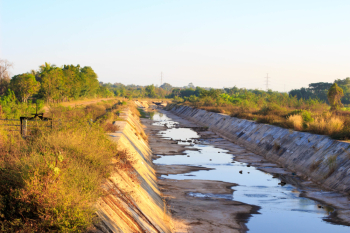
Water scarcity refers to the lack of sufficient water resources to meet the demands of human populations and ecosystems. India is facing a growing problem of water scarcity, as the country's population continues to grow, and climate change is affecting the availability of water. The effects of water scarcity on the environment in India are far-reaching and have a significant impact on the health and well-being of its citizens.
- Reduced agricultural productivity: Water scarcity can lead to a reduction in agricultural productivity, as farmers may not have access to sufficient water to grow crops. For example, in the state of Maharashtra, which is facing severe water scarcity, farmers have been forced to reduce the area of land under cultivation, and switch to less water-intensive crops.
- Loss of aquatic life: Water scarcity can also lead to a decline in aquatic life, as it can cause fish kills and harm other aquatic organisms. For example, in the state of Gujarat, which is facing severe water scarcity, the Sardar Sarovar Dam has reduced the flow of water in the Narmada River, which has caused a decline in fish populations.
- Damage to wetlands and other habitats: Water scarcity can also damage wetlands and other habitats, which provide important ecosystem services and support a wide range of plant and animal species. For example, the wetlands of the Sundarbans, which are home to the Bengal tiger, are under threat due to water scarcity caused by the diversion of water for irrigation and other human uses.
- Increased risk of water-borne diseases: Water scarcity can also lead to an increased risk of water-borne diseases, as people may not have access to clean drinking water.
- Climate change: Water scarcity also contributes to climate change, as it can reduce the ability of wetlands and other ecosystems to store carbon and protect against flood and erosion.
The Indian government has taken steps to address water scarcity, such as investing in water management infrastructure, promoting conservation and water-saving technologies, and implementing stricter regulations for water use. However, more needs to be done to address this issue, such as promoting sustainable water use practices, and increasing public awareness about the importance of water conservation and the impacts of water scarcity on human health and the environment.
Over-Exploitation of Natural Resources
The over-exploitation of natural resources refers to the extraction, use, and consumption of natural resources in a way that is not sustainable, and that exceeds the capacity of the environment to replenish them. India is facing a growing problem of over-exploitation of natural resources, as the country's population and economy continue to grow, and the demand for natural resources increases. The effects of over-exploitation of natural resources on the environment in India are far-reaching and have a significant impact on the health and well-being of its citizens.
- Loss of biodiversity: Over-exploitation of natural resources can lead to a loss of biodiversity, as it can cause damage to natural habitats, and harm plants and animals that live in these areas. For example, the over-harvesting of sand for construction has led to the destruction of mangrove forests, which support a wide range of plant and animal species.
- Reduced water availability: Over-exploitation of natural resources can also lead to a reduction in water availability, as it can cause changes in the water cycle, leading to a decline in the recharge of aquifers and surface water sources.
- Soil erosion: Over-exploitation of natural resources can also cause soil erosion, as it can remove vegetation that holds soil in place, and protect it from erosion by wind and rain.
- Climate change: Over-exploitation of natural resources also contributes to climate change, by releasing carbon stored in the soil and vegetation, and reducing the ability of the environment
In conclusion, over exploitation of natural resources in India has had a significant impact on the country's environment and economy. The depletion of resources such as forests, water, and minerals has led to a loss of biodiversity, soil degradation, water pollution, and climate change. Additionally, over exploitation has also led to the displacement of local communities and the loss of traditional livelihoods. It's crucial for the government and other stakeholders to take action to address these issues and promote sustainable resource management practices.
Pollution of Sacred Rivers
The pollution of sacred rivers in India is a significant environmental issue, as many rivers in India are considered sacred and play a crucial role in the cultural and religious practices of local communities. The pollution of these rivers can have a range of negative effects on the environment and human well-being.
- Contamination of drinking water: The pollution of sacred rivers can lead to the contamination of drinking water, which can have serious health consequences for human populations. For example, the Ganges River, which is considered sacred by millions of Hindus, is heavily polluted with industrial and agricultural waste, leading to the spread of waterborne diseases.
- Loss of aquatic life: The pollution of sacred rivers can also have a significant impact on aquatic life, causing fish kills and harming other aquatic organisms. For example, the Yamuna River, a major tributary of the Ganges, is heavily polluted with industrial and domestic waste, leading to a decline in fish populations and other aquatic life.
- Damage to cultural and spiritual values: The pollution of sacred rivers can also damage cultural and spiritual values, as many communities in India rely on these rivers for religious ceremonies and rituals. For example, the pollution of the Narmada River, which is considered sacred by many tribes and communities, can affect the religious practices of these communities.
- Climate change: The pollution of sacred rivers also contributes to climate change, by releasing greenhouse gases such as methane and carbon dioxide from decomposing organic matter in water.
In conclusion, India faces a wide range of environmental issues, including air and water pollution, deforestation, and loss of biodiversity. These issues are often caused by rapid industrialization and urbanization, as well as poor waste management practices. Climate change is also exacerbating these problems and posing new challenges for the country. Addressing these issues will require a combination of government action, public awareness, and individual efforts. It is important for all stakeholders to work together to find sustainable solutions that protect the environment and promote economic development.
Copyright © 1993—2025 World Trade Press. All rights reserved.

 India
India 